Debating the state of the nation: South African MPs' claims about crime, education, service delivery and more scrutinised
-
Claims about load shedding, the number of young people not in employment, education or training (NEET) and the number of Covid-19 vaccine doses administered were incorrect.
-
One claim on the number of rapes reported to the police was unproven while another about the percentage of water lost through leaks and poor infrastructure was exaggerated.
-
Three MPs made similar claims about higher and tertiary education but only one got his figures right. A claim about the country’s unemployment rates was also correct.
In February 2023 South African parliamentarians debated the president’s state of the nation address (Sona).
In response to president Cyril Ramaphosa’s speech a few days earlier, some members of parliament (MPs) did not hold back in their criticism of the president, his government and the state of the country. Others praised the progress that had been made so far.
Africa Check took a closer look at some of the claims made during the debate. Which MPs got their facts right? And who needs to do more homework?
Source: Vuyolwethu Zungula, African Transformation Movement (ATM)
“Everything has gone from bad to worse under your leadership,” Vuyolwethu Zungula, president of the ATM, told Ramaphosa, during his debate slot. As evidence, he claimed that when Ramaphosa took office, the unemployment rate was 25.6%. “Now, it’s 33.9%,” Zungula said.
Statistics South Africa (Stats SA) collects data on employment in the country on a quarterly basis. In the first quarter of 2018 (January to March), when Ramaphosa took office, the unemployment rate was 26.7%. By the second quarter of 2022, it had risen to 33.9%, as Zungula said.
Technically, however, the latest data available at the time of the Sona debates was from the third quarter of 2022, which showed an unemployment rate of 32.9%. Statistics for the fourth quarter of 2022, released shortly after the Sona debates, showed a very slight drop in the rate, to 32.7%.
But Zungula’s claim is mostly correct.
It's important to note that these percentages represent what is known as the “narrow” unemployment rate. This only includes people of working age who were unemployed but able to work and had recently tried to find a job or were planning to start work.
The expanded definition is also often used to measure unemployment. This includes people who were unemployed and not looking for work, either because they were "discouraged job seekers" or for other reasons.
Unemployment rates using this broader definition paint an even bleaker picture. In the first quarter of 2018, the expanded unemployment rate was 36.7%, rising to 43.1% in the third quarter of 2022. It fell slightly to 42.6% in the final quarter of the year.
No matter how you slice and dice it, it is clear that unemployment has been on the rise since 2018.
Source: Vuyolwethu Zungula, ATM
As further evidence that South Africa is “worse off” under Ramaphosa’s administration, Zungula claimed that there was no load shedding in 2018, whereas there was “now permanent load shedding”.
Load shedding refers to rolling power cuts implemented by South Africa’s power utility Eskom, when “the system has insufficient capacity” to meet energy demand.
In January 2023, Eskom announced that the country could expect load shedding to continue until further notice. This was part of Eskom’s plan to return about 6,000 megawatts of generating capacity to the grid over the next two years.
But what was the situation like in 2018?
In May 2018, Eskom’s then interim chief executive officer Phakamani Hadebe announced that the utility’s energy availability factor – the percentage of maximum energy generation that Eskom could deliver to the grid – was 78%.
“Load shedding … is not likely,” he said.
In the briefing, however, Hadebe warned that load shedding could occur if “certain anomalies” came into play. He spoke about the challenges the utility had in getting coal. At the time, Eskom had not implemented load shedding since September 2015.
But in December 2018, Eskom issued several power alerts informing the public that nationwide load shedding would be implemented that month, due to technical faults, unplanned maintenance, and low diesel reserves.
According to statistics released by the Council for Scientific and Industrial Research (CSIR) in November 2022, South Africans experienced load shedding for a total of 127 hours in 2018.
This increased to 530 hours in 2019, 859 hours in 2020, 1,169 hours in 2021 and 1,949 hours in the first nine months of 2022, CSIR data shows.
Source: Nazley Khan Sharif, Democratic Alliance (DA)
South Africa's sexual and gender-based violence rates were highlighted during the Sona debates.
To illustrate the extent of under-reporting, Nazley Khan Sharif of the DA, and a member of the Portfolio Committee on Women, Youth and People with Disabilities, said: “It is estimated that only 4% of rapes are reported.”
This meant, she said, that “the number of people raped since 2017 up until 2022 could be as high as 5.5 million”.
Rape often makes headlines in South Africa, where it is defined as the unlawful and intentional sexual penetration of a person without their consent. According to the latest crime statistics, 12,419 rapes were reported to the police between October and December 2022. But is this just a fraction of the rapes that actually take place?
Statistic from a 2011 Gauteng study
Africa Check asked Sharif for the source of her claim. She said the figure came from a study conducted in the Gauteng province in 2011.
She said it showed that “one in four women in the province has experienced sexual violence in their lifetime. An even higher proportion of men (37.4%) disclosed perpetrating sexual violence. Yet violence against women is still regarded as a private affair with only 3.9% of women interviewed reporting this crime to the police”.
The study was part of a larger evaluation called the Gender Based Violence Indicators Project, carried out by the South African Medical Research Council and the advocacy group Gender Links.
Researchers randomly selected 511 women in the Gauteng province to be interviewed about their experiences of gender-based violence, including rape. The study was designed to ensure the women selected were representative of the wider Gauteng population.
Around a quarter of the women surveyed had been raped. Of these women, only 3.9% said they had reported it to the police. This dropped to around 2% for women who had been raped by an intimate partner.
Limited research available
The main problem with the study is that it is not nationally representative. Research suggests that sexual offences and reporting rates of rape in South Africa vary by geographical area, so figures from Gauteng cannot be generalised to the whole country.
But Sharif’s claim also referred to “people”, not women specifically. The rape of people who are not women is often neglected in research and public debate. For example, there is a lack of research on sexual violence experienced by people outside the gender binary.
Statistics on sexual violence against men and boys are also limited, not least because until 2007 it was, as researchers describe, “legally impossible for men to be victims of rape”. The under-reporting of sexual violence among this group is also a distinct and complex barrier.
What does other research say?
Very little research has been done on the true extent of rape in South Africa. Without recent, nationally representative data it is impossible to estimate how many people are raped each year, but in addition to the study discussed above, there are others that provide limited insight.
For example, another survey was conducted in 2014 for the Western Cape province as part of the Gender Based Violence Indicators Project study. It found similarly low rates of reporting, with only 2% of rape victims in the study having reported a rape to the police. But this data, now a decade old and from just one province, also can’t be extrapolated to the country as a whole.
The only national estimate is from 1998. The South Africa Demographic and Health Survey estimated that about 15% of women, aged 15 to 49, “sought help from the police”. However, the survey only looked at victims within a limited age range, and is now very out of date.
Why people don’t report rape
There are many reasons why people may not report rape to the police, including stigma, lack of support in victims’ communities, and mistrust of the police, Nomfundo Mogapi, a former executive director of South Africa’s Centre for the Study of Violence and Reconciliation, previously told Africa Check.
Other reasons include the victim's belief that the rapist will not be punished in the end. Many cases are not prosecuted or do not make it to court. Lost files, discouragement of women from reporting the rape and other forms of police corruption have also been documented.
Importance of accurate rape statistics
Accurate statistics on rape are difficult to produce because of the high cost of conducting methodologically sound studies, gender-based violence researcher Lisa Vetten previously told Africa Check. But they were necessary to determine the extent of the problem, she said.
Public officials also have a responsibility to provide up-to-date, reliable and verifiable information on this important issue. Unsubstantiated statistics don't help the public understand the problem, and they won't aid government attempts to tackle it.
Source: Ahmed Munzoor Shaik-Emam, National Freedom Party
As the government continues to urge South Africans to use water sparingly, Ahmed Munzoor Shaik-Emam of the National Freedom Party blamed the government for what he called a “water crisis”.
Addressing Ramaphosa, Shaik-Emam said: “Even though you talk about projects that you want to implement, you are losing 54% of water to leakage and poor infrastructure in the country.”
Africa Check asked Shaik-Emam for the source of his claim. He shared this Independent Online article, which discusses the findings of an audit of eThekwini Municipality for the 2021/22 financial year by the office of the Auditor-General.
The audited financial statements show that the municipality’s water losses were 618,465 kiloliters per day, amounting to R1,989,060,389 in losses for the 2021/22 reporting period.
The accounts also show that 56.2% of the water supplied did not generate any income for the municipality. This water loss is referred to in official reports as “non-revenue water”. It refers to water on which municipalities don't earn any income, including water lost through physical leakage, commercial losses, and authorised consumption of water that is not billed.
Although the source on which Shaik-Emam based his claim does not reflect the state of non-revenue water nationally, some experts have described the national situation as “dire” with no signs of improvement.
According to the national water services knowledge system, maintained by the department of water and sanitation, South Africa’s non-revenue water ratio was 47.5% in 2021.
South African water conservation management, 2021
|
System input volume (litres) |
Revenue water (litres) |
Non-revenue water (litres) |
Non-revenue water (%) |
|
3,444,123,036 |
1,916,926,453 |
1,527,196,583 |
47.54% |
Source: Department of Water and Sanitation
The department calculated this figure based on information received directly from municipalities. “At any time about half of municipalities can provide information, but this equates to about 75% of water consumed,” it said.
The figure was in line with an estimate by the minister of water and sanitation, Senzo Mchunu, in December 2022. “Non-revenue water is currently sitting at 45.1%,” he wrote in response to a parliamentary question, while “31.9 % are losses through physical leakages”.
These figures will be confirmed in March 2023, with the publication of the “No Drop Report”, an assessment of water loss by the department. (Note: We will update this report then.)
Sources: Xola Nqola, African National Congress (ANC), and Mmoba Solomon Malatsi, DA
Stats SA collects data on the number of young people who are not in employment, education or training (NEET). It serves as an important additional labour market indicator for young people, says the data agency.
Two MPs referred to this indicator in the debates that followed the president's speech. Xola Nqola, member of the ANC, said “nearly 4 million young people between the ages of 15 and 24 years are neither in education, employment or training”.
Mmoba Solomon Malatsi of the DA made a similar claim but gave a different age range, saying “10.2 million young people between the ages of 15 and 20” were NEET.
Are either of these figures accurate?
Stats SA’s labour force report for the third quarter of 2022 shows that the number of young people aged 15 to 24 in South Africa was 10.2 million, “of which 34.5% were not in employment, education or training”.
This means that Malatsi’s figure of 10.2 million reflected the total number of people aged 15 to 24 in the country, not just those NEET.
Working out the actual number from the report, 34.5% of 10.2 million is 3.519 million, so the number of young people aged 15 to 24 who were NEET was just over three and a half million.
Although Nqola qualified the claim by saying “almost” four million, this is a wide margin to round up by – 481 000 people.
Source: Joe Phaahla, ANC
Health minister Joe Phaahla praised the country’s efforts in fighting the global Covid pandemic, claiming that “just under 49 million” Covid vaccine doses had been administered. He also said that 51.1% of the adult population had been vaccinated.
But Phaahla exaggerated the country’s Covid vaccination figure by about 10 million doses. As of 20 February 2023, the government’s official vaccination statistics portal, updated weekly, recorded that a total of 38,533,318 doses had been administered.
Also as of 20 February, official statistics showed that 51.3% of the adult population (those aged 18 years and over) had been vaccinated. This represented just over 20 million of the nearly 40 million people in this age group.
However this may be based on slightly outdated statistics. The estimate of the percentage of adults vaccinated is based on Stats SA’s 2020 mid-year population estimates (MYPE).
More recent population estimates are available. Stats SA’s 2022 MYPE showed there were just over 46 million people aged 18 and over in South Africa. Using this estimate, only 44% of this age-group are vaccinated against Covid-19.
Prof Shabir Madhi, dean of health sciences and professor of vaccinology at Wits University in Johannesburg, told Africa Check that the best practice in this scenario would be to use the most recent data.
However, the department of health’s media liaison director, Foster Mohale, told Africa Check that the department had not done so, because the most recent data was only available at the provincial level “which is too aggregated for use in comparing vaccination coverage at district and subdistrict levels”.
Sources: Julius Malema, Economic Freedom Fighters (EFF), Floyd Shivambu, EFF, and Buti Manamela, ANC
During the debates, three MPs made very similar claims about education, all quoting different numbers.
Julius Malema, leader of the opposition EFF, claimed that “in the year 2022, almost 1 million students wrote their senior certificate examination, matric, and yet there are less than 200,000 spaces available in universities of technology and universities”.
In support of Malema’s point, Floyd Shivambu, deputy president of the EFF, asked Ramaphosa: “How do you explain that you’ve got close to a million children who write their exams at the senior secondary level, but you only have got 160,000 spaces available to take them at post-secondary level?”
Responding directly to Malema, Buti Manamela, deputy minister for higher education, science and technology, gave different figures. “This year, Honourable Malema, enrolments at universities have reached close to 1.2 million students,” he said.
Are any of these claims true, or which MP was closest?
Well under 1 million sat for matric exams
Grade 12, often referred to as matric, is the final year of high school in South Africa.
Typically, more than a million pupils enrol in grade 1, but well under a million reach grade 12. This table, from data journalism organisation The Outlier, illustrates the decline in numbers.
The Outlier’s Laura Grant told Africa Check that the data comes from the annual School Realities Report, published by the Department of Basic Education (DBE).
In 2022, the DBE recorded that there were 775,630 grade 12 students in South Africa. These students were part of a group of 1,177,089 in their grade 1 year (2011).
According to basic education minister Angie Motshekga, 834,565 people wrote the 2022 “national senior certificate” or matric exams. This included just over 700,000 full-time students and about 100,000 part-time students.
In total, just under 600,000 students passed their exams. Of these, only 278,000 achieved a “bachelor’s pass”, the minimum standard required for admission to a university bachelor’s degree programme.
Malema and Shivambu were both incorrect when they claimed that “almost 1 million” students wrote their matric exams in 2022.
University enrolment higher than 200,000
What about enrolment in tertiary education?
Bayanda Mzoneli, head of office for the deputy minister of higher education, science and technology, told Africa Check that Manamela did not disagree with Malema about the number of positions available for recent graduates. The deputy minister only meant to argue that overall university enrolment had increased since 1994, he said.
Manamela is mostly correct when he says that “enrolments at universities have reached almost 1.2 million students”. This is in line with data provided by the current minister of higher education, science and innovation, Blade Nzimande.
The minister said on Twitter in January 2023: “The overall total enrolments within the public university sector for the 2023 academic year is projected to provide 1,112,439 spaces.”
Nzimande also shared, on his official Twitter and Facebook accounts in March 2022, a breakdown of 2022 enrolments at South African universities. In total, the data recorded just over a million university students, with 916,774 enrolments at under-graduate level. However, it’s unclear how many of these enrolments were for new students, that is, those that wrote matric exams in 2021.
The Department of Higher Education and Training records data about university enrolment on its higher education management information system (Hemis), which can be accessed here.
According to Hemis data, there were just over 200,000 “first-time entering” undergraduate students in 2021. Not all of these students would have matriculated in 2020, but this indicates that there were over 200,000 spaces for students who were not already enrolled and continuing their studies.
This is the most recent data available. We will update this report with 2023 enrolment figures when they are released. However, based on the number of places available in recent years, the figure is likely to be higher than Malema and Shivambu claimed.
Note: Africa Check has contacted the three MPs quoted here to ask for the sources of their various claims. We will update this report should any of them respond.

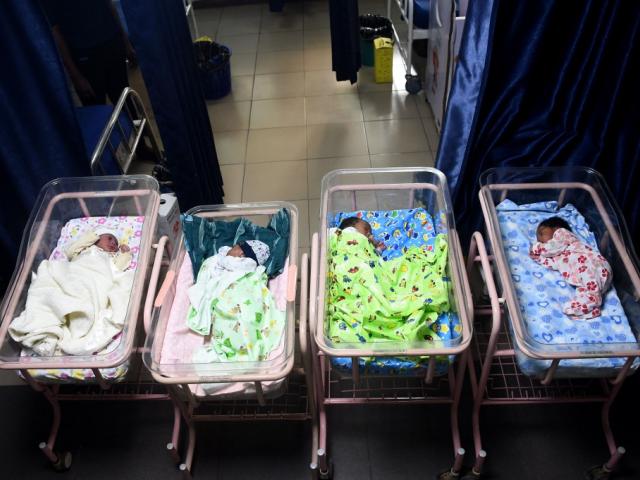
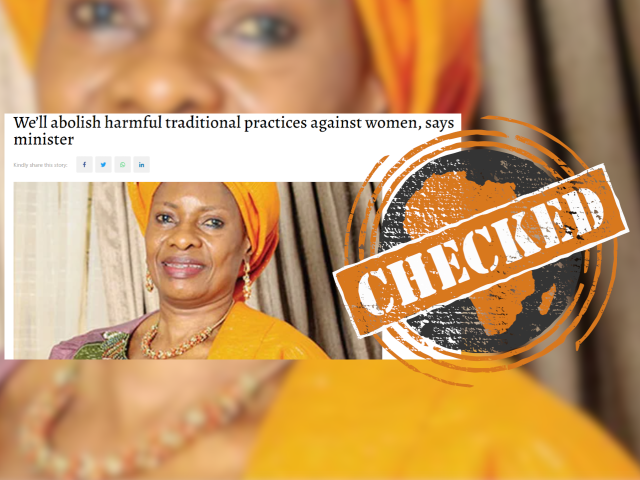

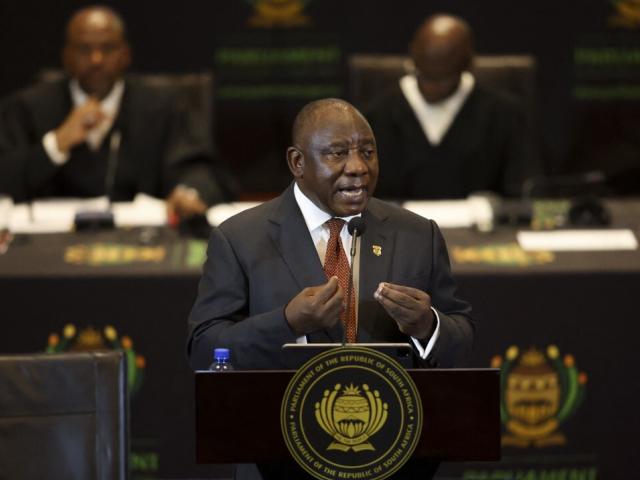
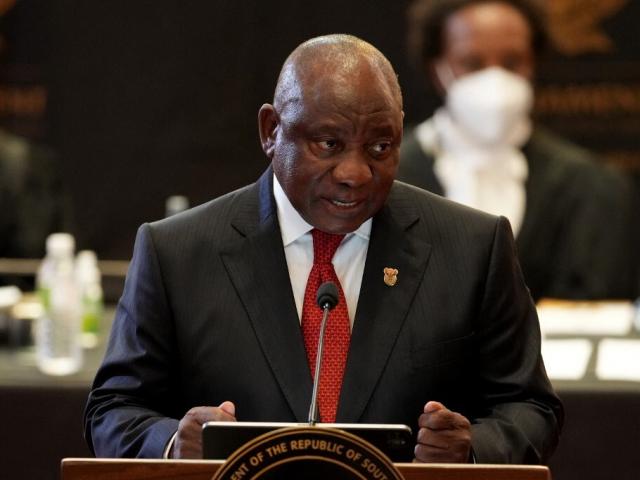
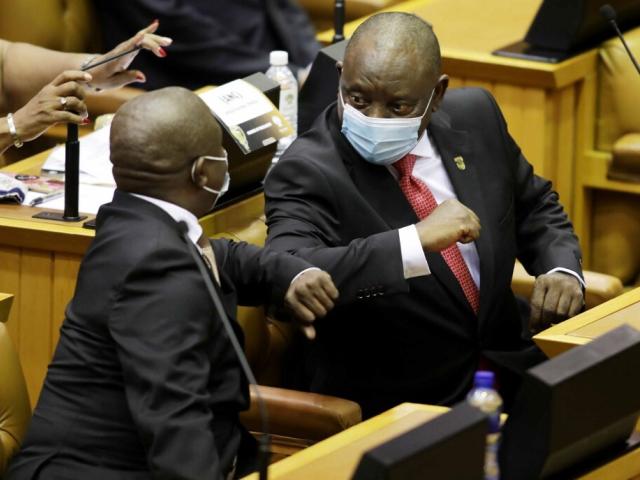
Add new comment